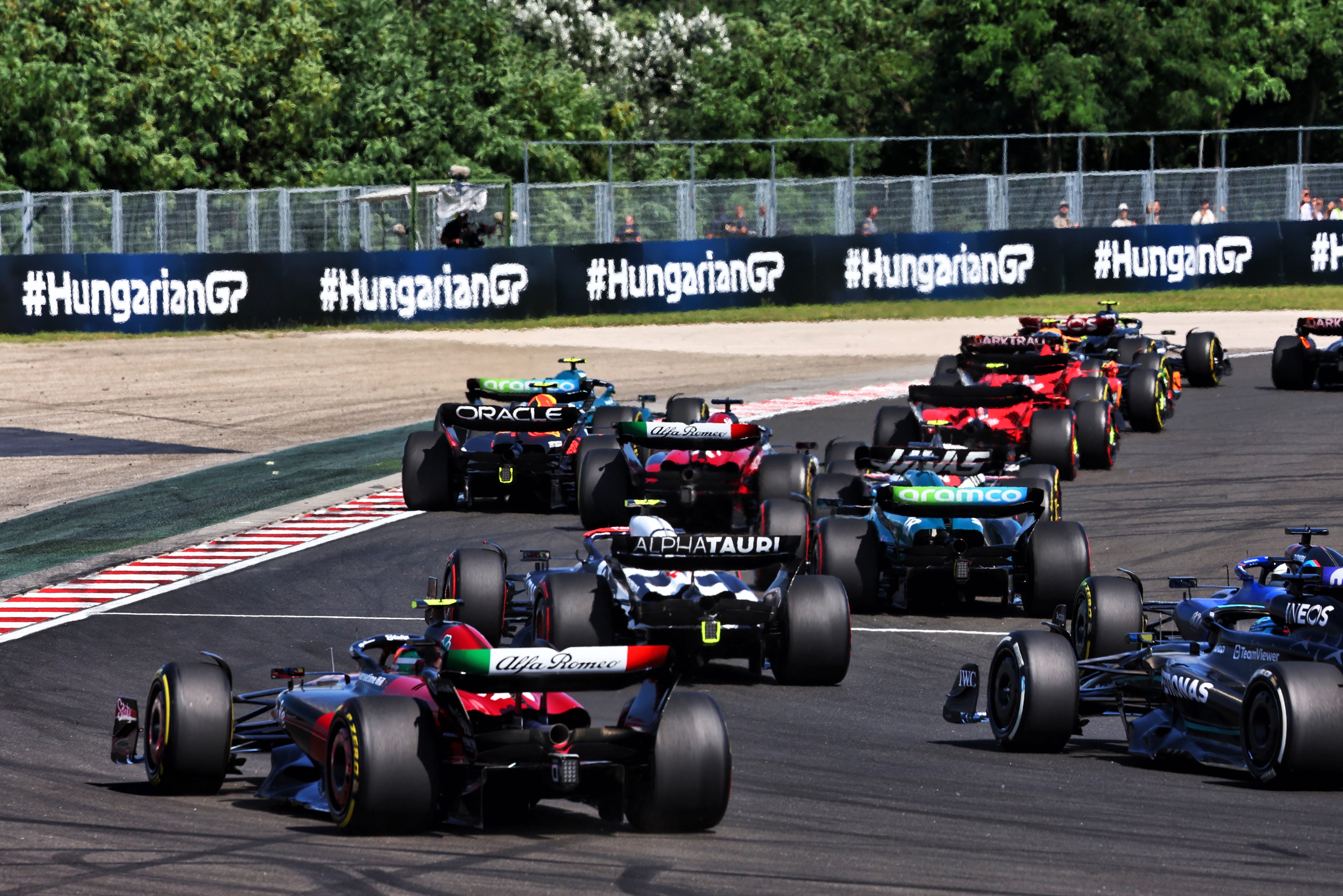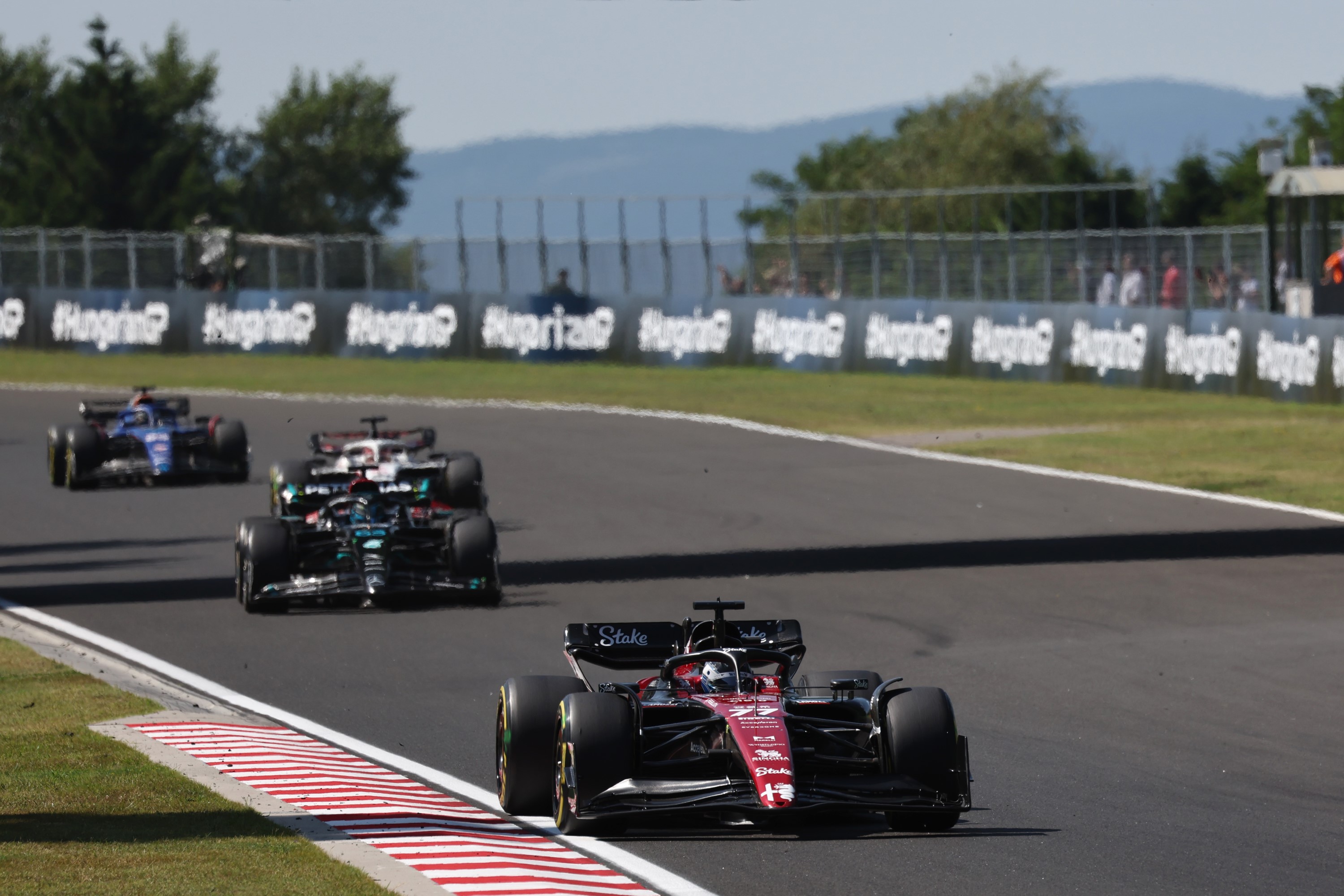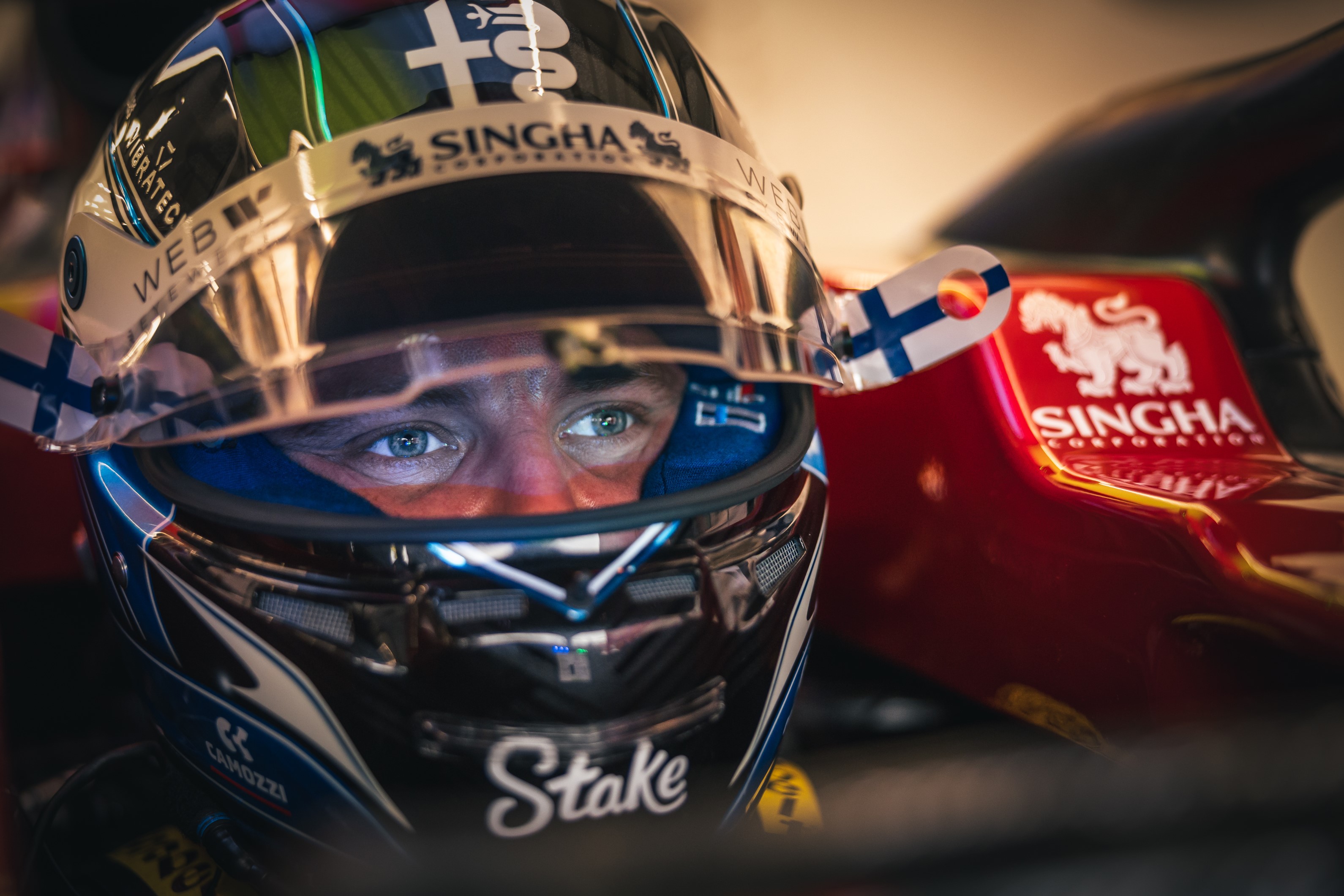Up Next

On Saturday in Hungary, Alfa Romeo had its best day of the season – with both cars in the top 10 and every chance of turning that into its biggest points haul of a difficult season. But within a minute of the start, as head of trackside engineering Xevi Pujolar put it, “all the work we did yesterday was pretty much gone”.
The Alfa Romeo C43’s improved form was down to a confluence of factors, primarily the fact the low/medium-speed corners of the Hungaroring played to the strengths of the car. It’s well-balanced, but carries too much drag and is weaker in the faster corners, problems that aren’t so relevant in Hungary. That was proven by Zhou Guanyu qualifying a career-best fifth and team-mate Valtteri Bottas taking seventh.
Having the two cars lined up on the cleaner side of the grid should have been ideal, but was at the heart of Alfa Romeo’s terrible Sunday. Zhou had a painfully slow start from fifth on the grid, barely moving when the rest of the field got away.
“I was holding the revs before the lights,” said Zhou. “I just lost all response on the throttle, so I started basically with zero throttle but I was flat on the pedal.”
That led to him plummeting down the order on the run to Turn 1. He then locked up when he hit the brakes and punted Daniel Ricciardo’s AlphaTauri into Esteban Ocon’s Alpine, which then cannoned into the other Alpine of Pierre Gasly. Zhou, who finished the first lap down 16th and was hit with a five-second penalty for the collision, blamed that on the effect of the turbulent air.
Zhou collides with Ricciardo at the start, both drives drop down the field #HungarianGP #F1 pic.twitter.com/WgI6Ih3SxZ
— Formula 1 (@F1) July 23, 2023
The team confirmed there was a problem at the start with the car going into a safer pull-away mode for reasons related to the brakes.
“We are still investigating what went wrong there,” said Pujolar when asked by The Race to explain Zhou’s terrible start.
“It looks like something with the brake system strategy that caused a failsafe on the engine side. We’re trying to understand how that would be triggered at that point.
“That means that we lost the start with Zhou. But it also it had an effect on Valtteri, who was just behind and lost three positions there and lost the rhythm and another three positions during lap one.
“The conclusion is at the end of lap one we are P12 and P16. All the work we did yesterday was pretty much gone and then [we were] trying to recover from there.”

Bottas had to swerve left to get round Zhou, which allowed Fernando Alonso and Sergio Perez to pass him on the run to Turn 1. That put him on a middle line into Turn 1, with the compromised entry allowing soft-shod Carlos Sainz to pass them all as he leaped from 11th on the grid to sixth.
Bottas then left the door open into Turn 2, allowing Haas driver Nico Hulkenberg to dive up the inside.
Hulkenberg completed that move around the outside of Turn 3. That compromised Bottas’s run to Turn 4, the Finn taking a middle line into the corner and leaving room for Lance Stroll to squeeze around the outside and get ahead.
Bottas legitimately complained about Stroll exceeding track limits in completing the move, but, as Pujolar explained, “we reported it but were told that was OK”.
He then had a slightly poor exit from the Turn 5 right-hander, which allowed Yuki Tsunoda to get a run on him and dive up the inside of him into the chicane. That meant that one minute after the lights went out, as Bottas headed through the sweeps in the second sector, he was down in 12th.
Having ceded ground at a track where it was difficult to overtake, that condemned Alfa Romeo to a frustrating afternoon and Bottas and Zhou finished in the same positions that they had held at the end of the opening lap. The car didn’t have the pace to fight back into the points.
But had they held position at the start, points may well have been on offer – albeit with Alfa likely competing with Aston Martin for the final two places, and potentially Carlos Sainz’s Ferrari. Pujolar confirmed that, saying “today, the pace was OK, but it was maybe more yesterday”, meaning that holding on to fifth and seventh was always unlikely.

On top of the track characteristics suited the Alfa Romeo, they were other factors that contributed to its form. Pujolar suggested the high downforce, warmer temperatures and the alternative tyre allocation experiment helped it overachieve in qualifying. But he also reckoned the team unlocked more performance from the major upgrade centred on the floor introduced two weeks earlier at Silverstone.
While that package was focused on improving the car’s performance in high-speed corners, there was also a benefit in the medium-speed as well. And, it seems, that has raised the ‘global’ performance of the car slightly.
The obvious question is whether Alfa Romeo has squandered its best chance of a big points haul given it has managed only nine points all season? While qualifying as high as fifth or even seventh again will be difficult in normal circumstances, at favourable tracks the gaps are small enough that on good days it can be a contender for minor points finishes.
However, there is stiff competition in this part of the grid. Alpine is now the sixth-strongest car, with Red Bull, McLaren, Mercedes, Ferrari and Aston Martin established as the top five. So there’s a dozen cars that Alfa Romeo will usually be hard-pressed to beat.
Haas also has strong qualifying pace, albeit that only occasionally translates into race pace given its tyre-deg troubles, while Williams and AlphaTauri are also capable of being in a similar part of the field on a good day. And as Bottas explained, the next good day might not be until after the August break – and Alfa Romeo might have wasted its best track.

“This one was one of the strongest tracks for our car this year,” said Bottas. “Spa, on the other hand, if I’m honest, it’s probably going to be on the other end of the scale, a bit like Silverstone.
“Of course we’re still lacking a bit of efficiency, we’re not so good on the straight lines, but let’s see. We try to find the right wing level and go from there.”
Seventh in the constructors’ championship is Alfa Romeo’s realistic target and it’s just two points behind Haas and Williams. There will be other opportunities to score points this year, albeit interspersed with weekends when it falls in Q1, but the key is that the Sauber team capitalises on them.
The fact that its hopes of a double points finish evaporated almost instantly thanks to a problem with Zhou’s launch is exactly the kind of error that can’t happen again.






